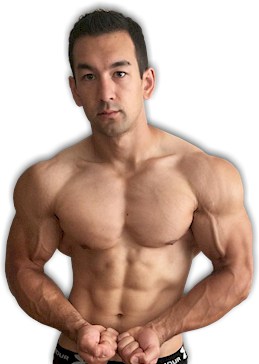HOW TO GET BIGGER SHOULDERS
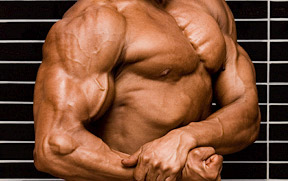
Underneath a shirt, the shoulders probably make the biggest contribution to a bodybuilder’s overall physique.
They’ll give you a broad, powerful look from all angles and also contribute to the appearance of a smaller waistline.
In this article, I’ll be giving you a quick overall run down of how to get bigger shoulders as efficiently as possible…
Basic Anatomy
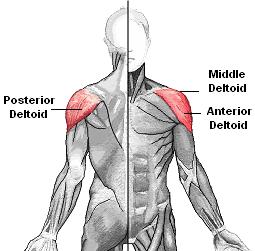
The shoulders (properly referred to as the “deltoids”) are made up of 3 individual heads: the anterior head (the front), the lateral head (the middle) and the posterior head (the back).
For maximum size and thickness, all 3 heads need to be properly trained.
This is accomplished using two different movements: overhead presses and lateral raises.
Exercise Selection
A complete shoulder workout should consist of 3 difference exercises in order to target each individual head.
There are a ton of different shoulder exercises you could perform, but I’m going to narrow this down to 3 of the most effective lifts out there…
The first exercise is a seated overhead dumbbell press. This is a compound exercise that targets both the anterior and lateral heads.
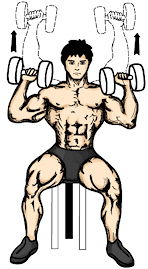
This should be the core lift in your entire shoulder routine for overall mass.
It can also be performed seated or standing with a barbell (this is known as a “military press”), but dumbbells are superior because:
a) They allow each arm to move independently. This provides a more natural range of motion that prevents strength imbalances and shoulder injuries.
b) They keep the arms out to the sides rather than out in front which puts more stress on the shoulder muscles as opposed to the triceps.
After that, you’ll want to include a standing cable side lateral raise to isolate the lateral head.
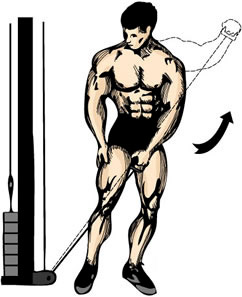
This is a fantastic exercise to create overall shoulder width.
This lift can also be performed seated or standing with dumbbells, but the cable is superior because it keeps even tension on the shoulder throughout the entire range of motion. When using dumbbells, the tension drops off toward the bottom half of the movement.
To finish off your shoulder routine, include some face pulls in order to hit the posterior head.

This is a hugely underrated exercise that provides great stimulation to the rear head of the shoulders as well as the muscles of the upper back.
Not only does this produce overall gains in size and thickness, but it also helps to offset the common imbalance that most lifters have where their front delts/pecs are over-developed in comparison to their rear delts/upper back. Correcting this imbalance helps to prevent shoulder injuries.
Sets
2-4 sets of each exercise will easily get the job done.
The specific number of sets that you execute will depend on the overall intensity level of your workout.
If you’re training with maximum intensity all the way to muscular failure (where you cannot perform an additional rep in proper form despite your best efforts), then 2 sets will be enough.
If you’re training with more moderate intensity (1-2 reps short of failure) then go with 3-4 sets.
Rep Ranges
The seated overhead press is more of a power movement, and I would recommend performing 5-7 reps per set on this exercise.
For your lateral raise exercises, lighten the weight slightly and increase the rep range to about 8-10.
Frequency
A direct shoulder workout can be performed 1-2 times per week. This depends on your individual recovery ability, training intensity and schedule.
Putting It All Together
If you’re trying to figure out how to get bigger shoulders in the most effective and time-efficient manner, all you need is the following workout performed 1-2 times per week…
|
Exercise
|
Sets
|
Reps
|
|
2 – 4
|
5 – 7
|
|
|
2 – 4
|
8 – 10
|
|
|
2 – 4
|
8 – 10
|
* If you don’t have access to a cable machine, perform standing dumbbell side laterals instead. In place of face pulls, performbent over rear lateral raises.
That’s really all there is to it.
Make sure to write down the amount of weight you lifted and the number of reps you performed for each set, and then strive for improvement each week.
The underlying basis for continued muscle growth is progressive overload, so you should always be placing 100% of your focus on getting stronger over time.
As you can see, learning how to get bigger shoulders is not rocket-science. Apply these principles on a weekly basis and I guarantee you’ll be very pleased with the results.
– Sean
Here’s what to do next…
If you found this article helpful, make sure to sign up for your FREE custom fitness plan below...



